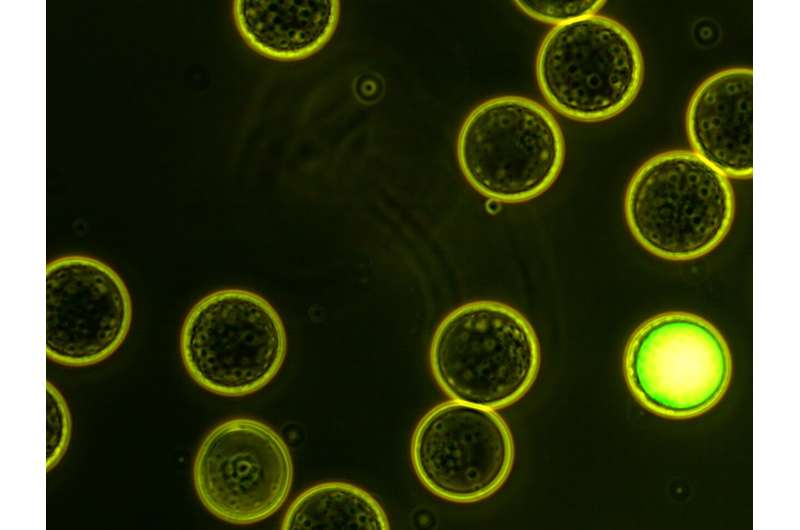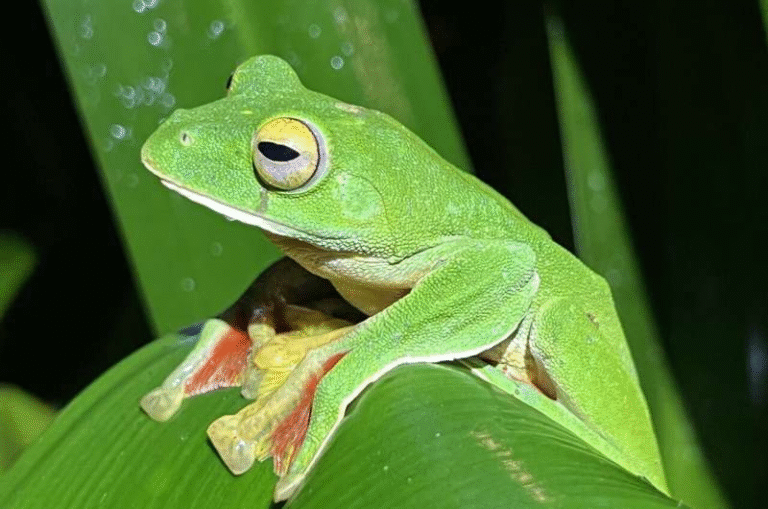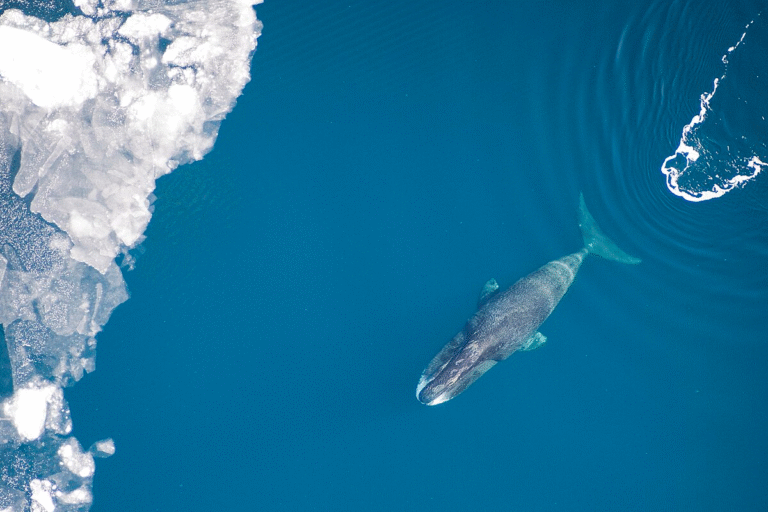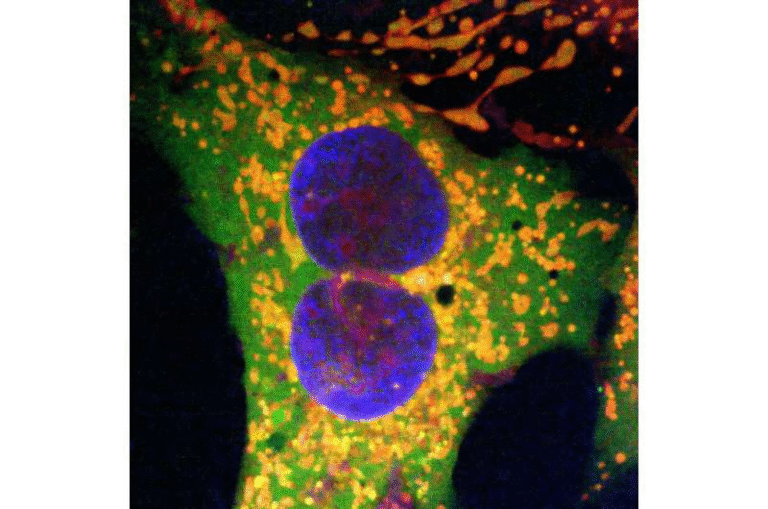New Microcompartment Genomics Method Expands How Scientists Study Viruses in the Environment

A new genetic sequencing technique developed by researchers at Bigelow Laboratory for Ocean Sciences and Atrandi Biosciences is changing how scientists study viruses and microorganisms in nature. The method, called Environmental Microcompartment Genomics (EMCG), allows scientists to sequence the genomes of thousands of individual cells and viral particles in a single experiment — all from just a few drops of seawater. It’s a major leap in understanding the invisible microbial world that drives much of Earth’s biology.
What Makes This Method Different
Traditional single-cell genomics requires sorting individual cells or particles into microplate wells, typically allowing researchers to study about 384 particles at once. The new EMCG approach increases that number by more than ten times, processing over 2,000 individual particles in just 300 nanoliters (less than a millionth of a liter) of seawater. This makes it both faster and more cost-effective while still providing high-quality results.
Instead of using flow cytometry to separate particles based on size, EMCG uses microfluidic technology to divide a sample into thousands of tiny, semipermeable microbubbles — each holding an extremely small volume of water (around one-trillionth of a liter). Individual cells, viruses, or even free-floating pieces of DNA are randomly captured inside these microbubbles.
Inside each microbubble, the DNA is amplified and tagged with a unique barcode. When the bubbles are dissolved, all the genetic material is combined and sequenced together. The barcode acts as an identifier, allowing scientists to reconstruct the genome of each specific particle afterward. This clever tagging system is what gives the method its scalability and precision.
Because the process does not rely on sorting particles by size, any biological particle — from large microbes to tiny viruses — can be captured and sequenced at the same time. That’s a huge advantage when dealing with complex natural samples where microbes and viruses vary widely in shape and size.
What the Scientists Found
To test the new technique, the team analyzed a sample of surface seawater from the Gulf of Maine. Using EMCG, they obtained genetic sequences from more than 2,000 particles. Of these, around 1,791 were classified as virus-like, and only about 193 were cell-like. This ratio — roughly 9 viruses for every cell — matches what scientists already know about marine environments, where viruses outnumber microbes by a wide margin.
From this tiny water sample, the researchers estimated there were about 1.93 billion microbial cells per liter and 17.9 billion virus-like particles per liter in the Gulf of Maine seawater. These estimates are consistent with other marine surveys, showing how effective the new method is at capturing real environmental diversity.
One of the most striking discoveries came from identifying a viral family called Naomiviridae. These viruses have a very unusual DNA structure that uses deoxyuridine (dU) instead of the standard deoxythymidine (dT) found in most DNA. Because of this unusual chemistry, Naomiviridae often go undetected in traditional sequencing methods, which expect canonical DNA bases. EMCG, however, successfully captured them, revealing that these viruses were the most abundant in the dataset. The researchers also found evidence suggesting that Naomiviridae infect some of the most common bacteria in the ocean.
This discovery hints that there may be entire groups of viruses that have remained invisible simply because standard sequencing approaches weren’t designed to find them. By revealing these “hidden” viral lineages, EMCG could dramatically expand our understanding of the ocean’s viral ecosystem.
Why This Method Matters
Viruses play a massive role in the ocean’s ecosystem. They influence the flow of nutrients and energy through marine food webs, affect global carbon cycles, and drive the evolution of bacteria and other microorganisms. However, many of these viruses have remained mysterious because they’re difficult to isolate and study.
Metagenomic approaches — where all DNA in a sample is sequenced together — can reveal which genes are present but often produce fragmented, incomplete genomes. Single-cell genomics helps overcome this, but it’s limited by low throughput and high cost. EMCG bridges that gap, delivering the completeness of single-cell sequencing at the speed and scale of metagenomics.
Because EMCG doesn’t require flow cytometry, it avoids the need for complex sorting equipment and reduces size-based biases that can exclude very small or oddly shaped particles. This means scientists can now get a holistic view of microbial and viral communities, including organisms that were previously missed.
Another exciting advantage is that the method is not limited to seawater. Early testing shows it can also work with soil and sediment samples, which are traditionally challenging because they contain many non-biological particles that can confuse existing sequencing techniques. This opens up possibilities for studying microbial life in environments as diverse as deep ocean sediments, freshwater lakes, and even contaminated soils.
The Trade-Offs and Future Directions
While EMCG provides unprecedented throughput and resolution, it comes with some trade-offs. Because it doesn’t use flow cytometry, researchers lose access to descriptive data such as particle size or fluorescence characteristics. This means EMCG gives less information about each particle’s physical traits, even though it excels at genetic detail.
Another limitation is that the capture process is random — not every compartment necessarily contains a single particle, and some particles may be missed entirely. However, the researchers accounted for this statistically, and their results align closely with known viral-to-cell ratios, indicating strong reliability.
Moving forward, the team aims to refine the technology further, making it even more efficient and compatible with a wider range of environments. They believe this method could become a standard tool for studying microbial and viral ecology worldwide.
A Glimpse Into the Hidden World of Viruses
The findings reinforce how much of Earth’s microscopic life remains undiscovered and uncharacterized. Marine viruses, though unseen, are among the most abundant biological entities on the planet — an estimated 10³⁰ viral particles inhabit the oceans. Many of them infect bacteria, regulating microbial populations and influencing how ecosystems function.
The discovery of the Naomiviridae’s unique DNA composition adds another layer to this mystery. If entire viral families use alternative chemical structures, there could be unknown biochemical diversity in nature that current methods simply overlook. That’s an exciting prospect for microbiologists, biochemists, and even astrobiologists, who are interested in how diverse life’s molecular blueprints can be.
Understanding these unseen viruses could also have practical benefits. Viral enzymes, for example, are often used in biotechnology, and new discoveries could lead to novel applications in medicine, genetic engineering, and environmental science.
Why This Breakthrough Matters Beyond Marine Biology
Techniques like EMCG could extend beyond studying microbes and viruses. They might help identify unknown genetic material in extreme environments such as deep-sea vents or polar ice, or even help monitor pathogens in wastewater for early signs of disease outbreaks. As sequencing costs continue to drop, high-throughput, size-agnostic approaches like this could become routine in environmental monitoring.
This research also reflects a broader shift toward single-particle genomics, a growing field that blends microfluidics, molecular biology, and computational genomics. Instead of treating microbial communities as undifferentiated masses, scientists can now look at each cell or virus individually, gaining a clearer picture of who’s there and what they’re doing.
The Bottom Line
The Environmental Microcompartment Genomics method marks an important step forward in environmental microbiology. By capturing and sequencing thousands of microbial and viral genomes from just nanoliters of seawater, it gives researchers a powerful new lens into the world’s smallest but most abundant life forms. It not only confirms what scientists suspected — that viruses dominate marine ecosystems — but also reveals that we’ve been missing entire categories of life all along.
For the first time, researchers can study this invisible majority in far greater detail, unlocking new insights into how life works on a microscopic scale and how it shapes our planet.
Research Reference: Single-particle genomics uncovers abundant non-canonical marine viruses from nanolitre volumes (Nature Microbiology, 2025)





